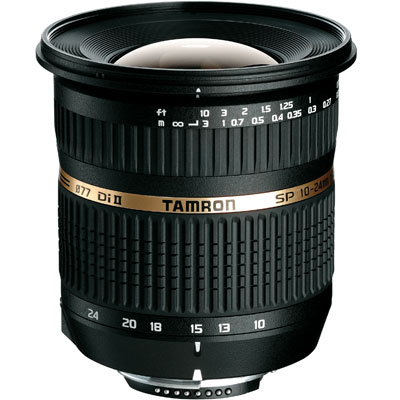Share your photographs...
We would love to feature your photographs on our equipment pages to help inspire others. We respect your copyright. Sharing is easy, just send us a link to your image on social media or your own website and remember to tell us about the following:
State that you own the copyright
Give us permission to use it
Include a link to your your web space
Include a caption for the image
Tell us about the equipment used
Review this item...
Tell us how you would rate it overall:
There are no reviews for this item
Tamron's Technical Terms
Di II
Di II lenses are constructed for the exclusive use on digital SLR cameras with smaller-size imagers (not bigger than 16x24mm) and featuring optical systems optimized to meet the performance characteristics of digital SLR cameras including:
1. High resolution
2. Minimization of peripheral light fall-off
3. Minimization of scattered light behavior
4. Minimization of chromatic aberration
Low Dispersion
LD Elements are produced of special glass materials which possess an extremely low color dispersion index (a unit which measures the ability of a glass to separate a beam of light in its spectral colors). LD elements compensate for chromatic aberration, which is particularly a problem with telephoto lenses. Chromatic aberration is a form of optical noise which reduces the sharpness and the brilliance of an image.
Super Performance
Tamron´s Super Performance series is a line of high performance lenses featuring high design specifications.
Aspherical
As a rule conventional lens elements have a constant radius (spherical), i.e. one can imagine that they are cut from a ball (sphere). This simple lens form, however, has disadvantages in terms of image defects. Thanks to innovative production technologies the trend is increasingly going over to the use of aspherical lenses. These lenses have, a surface which deviates from the ball form. Especially the correction of spherical aberration and coma can be strongly improved with these asphericals. Moreover, the distortion is compensated by means of aspherical lenses.
Internal Focus
Lenses of customary design have a front lens group which shifts when focusing. Internal focus lenses reach the sharp position by shifting (an) inner lens element(s). Here Tamron has developed the so-called Integrated Focus Cam which allows quick and exact focusing. Moreover, the MFD can also be reduced with the internal focusing, as well as image defects like vignetting. Another advantage is the stationary focus-ring regardless of the zoom position. The front element of the lens also does not turn which is important when using filters which dependent on direction (e.g., polarization filters).
| Attribute | Value |
|---|---|
| Lens Type: | Wide-Angle Zoom |
| Focal length - wide (mm): | 10 |
| Focal length - tele (mm): | 24 |
| Max aperture - wide: | 3.5 |
| Max aperture - tele: | 4.5 |
| Minimum aperture: | 22 |
| Minimum focus distance (m): | 0.2 |
| Image stabilisation: | No |
| Sensor format: | APS-C size |
| Lens mount: | Canon EF |
| Lens elements: | 12 |
| Lens groups: | 9 |
| Aperture blades: | 7 |
| Filter thread (mm): | 77 |
| Enlargement Ratio: | 1:5.1 |
| Colour: | Black |
| Size: | 83.2 x 86.5 mm |
| Weight (g): | 406 |










